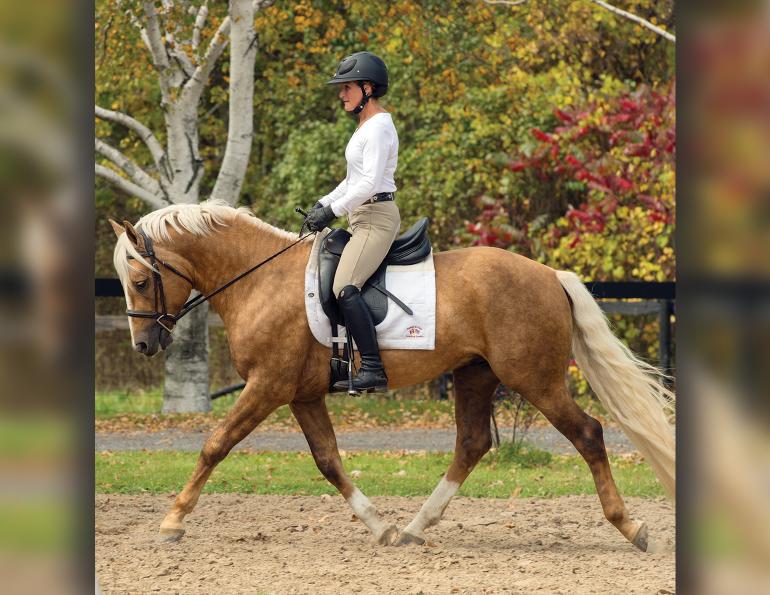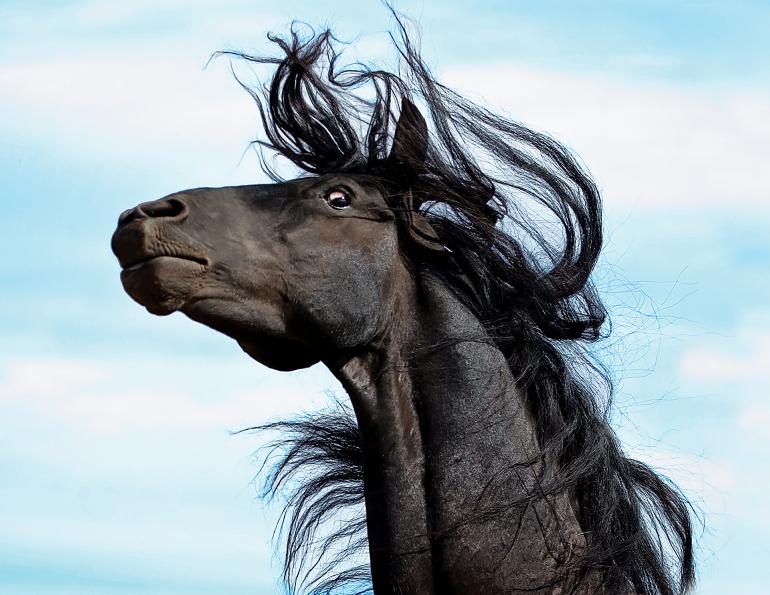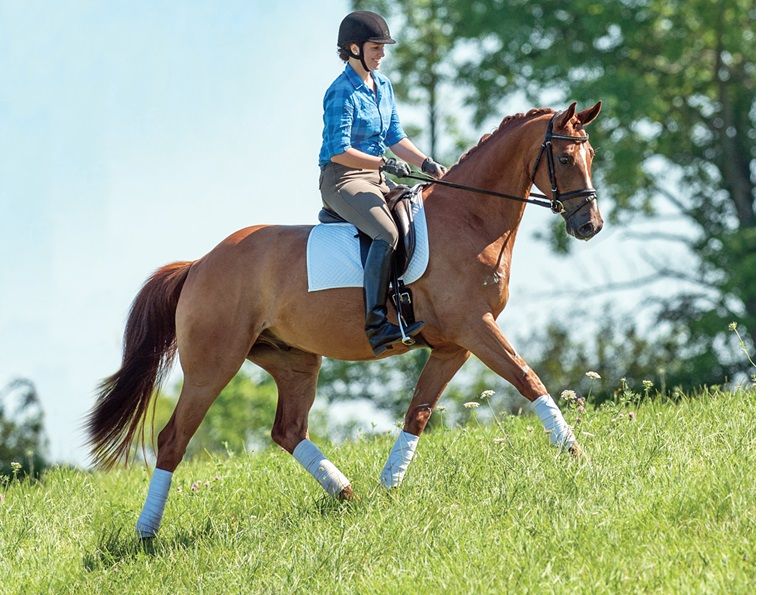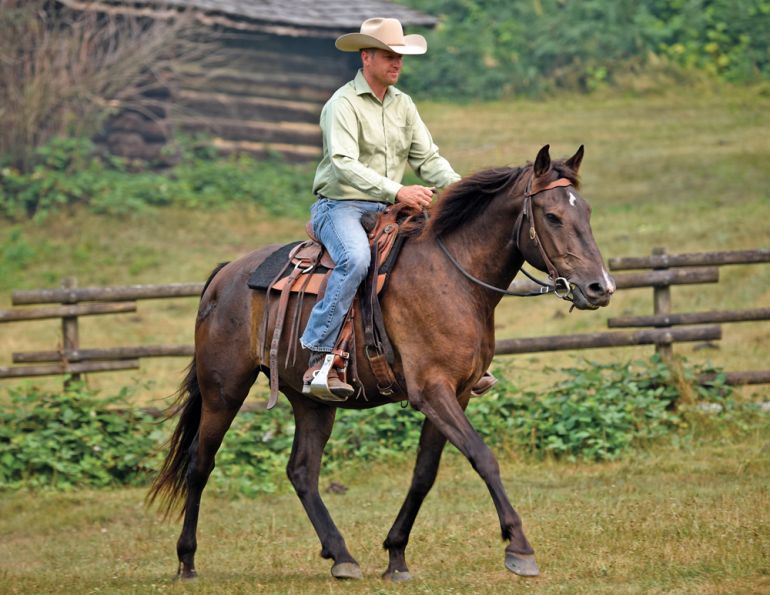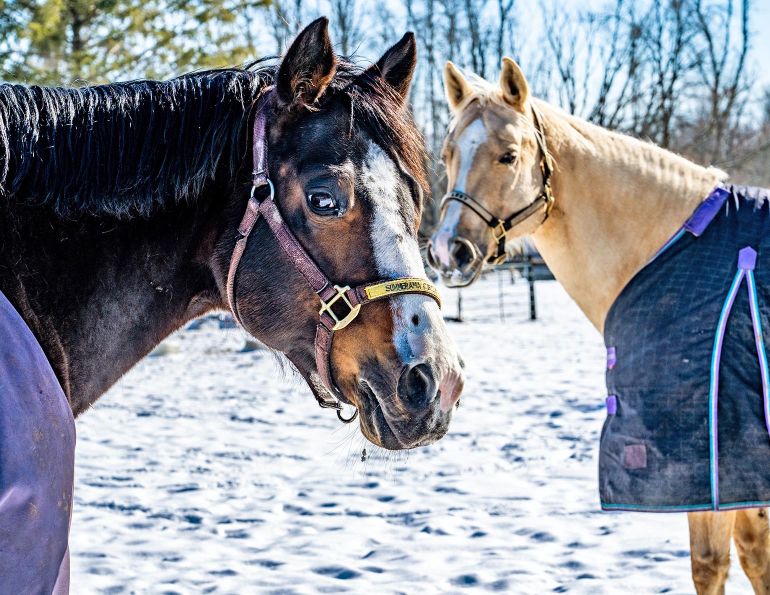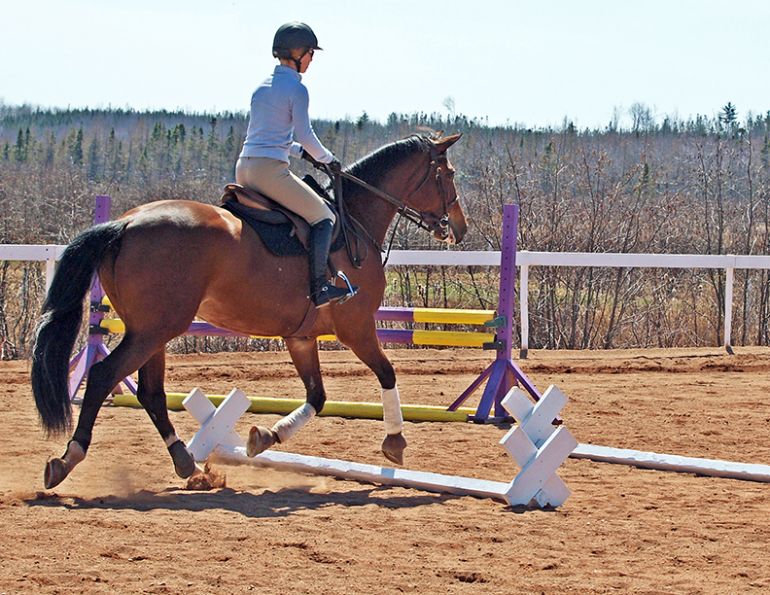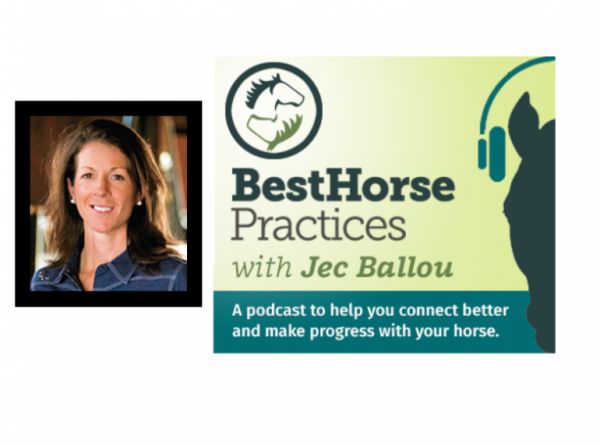By Jec A. Ballou
One of the simplest ways to improve athletic output is to ride your horse at different speeds within every gait throughout each week. Moving through a range of gears stimulates the neuromuscular system to create fuller metabolic function within muscles.
Think of this as tuning up sensory and motor nerves, which thereby leads to clearer and fuller recruitment of muscles they control. Additionally, altering the force of muscle contractions delivers more oxygen and blood. This means better fuel, circulation, and clearance of waste products. In fact, a horse that routinely moves through different gears is typically easy to identify because it’s often well-muscled and smoother to ride.
One of the most common causes for stiff and restricted movement in horses is too much cumulative time spent at the same pace. This repetitive range of motion diminishes fluidity over time through soft tissue adhesions, weakened motor nerve signals, and limited joint range of motion. As a result of not using the body fully, a horse then develops imbalanced gait patterns and muscles. Over time, this can result in subtle lameness or unpleasantness to ride.
The general rule for good body mechanics is to consistently practice three different speeds within each gait. These speeds within gaits should be distinct enough that they can be distinguished by a ground person from afar. Occasionally, riders form a comfort zone within a particular gait or speed, which leads to excess repetition. Comfort zones are often the detriment to fitness gains. Remember that the goal with speed changes is to achieve better fitness rather than to win horse shows. It is perfectly fine for the overall riding picture to become a little untidy when working through this.
A primary consideration — and one frequently affected by shifting between gears — is your line of travel. Speed changes require shifting forces and balance within the horse’s stride. When a horse’s balance becomes disorganized during these transitions, he usually veers off his line of travel. He might push unevenly with his hind limbs, causing his body to drift. Or he might pull harder with one foreleg than the other, becoming crooked. Keep all this in mind as you look forward and commit to a very clear line of travel. Ride with an intention of accuracy and clarity. This will help the horse’s alignment and prevent the likelihood of wobbling, bulging, and drifting all over the place.
Here are simple routines to help you stay accountable to riding all your gears.
Exercise 1: Counting Steps
A very straightforward routine, and an excellent way to keep yourself accountable when riding alone, is to vary the number of steps taken between two points in the arena. This can be done in all gaits.
- Set up two cones or ground poles several metres apart.
- Riding in an average working walk, jog, or canter/lope, count the number of strides taken between them. Remember this number as it is your baseline.
- Next time you ride between the two points, add two strides to your baseline by slowing down and shortening steps slightly.
- Next time you ride between the two points, subtract two strides from your baseline by increasing speed and lengthening steps.
- Keep cycling through this sequence. Ride your baseline number, subtract two strides from your baseline, add two strides to your baseline, and so on.
Related: Routines for a Balanced, Engaged Horse
Exercise 2: Cardio Intervals
A productive option for simultaneously delivering cardiovascular gains while tuning up neuromuscular responses is to perform aerobic intervals in an arena or other flat area. A general rule of thumb is to perform exercise and rest intervals in a one-to-one ratio, meaning you exercise briskly for a period and then rest for that same duration of time. You repeat this sequence as many times as appropriate for current fitness levels. Here is a sample of what I prescribe for students just starting with these:
- Warm up with at least 10 minutes of walking plus five to eight minutes of jogging, transitions, and perhaps a canter depart in each direction.
- Perform a fast trot or moderate canter for 60 seconds. This is the work part of the interval.
- Immediately jog slowly for 60 seconds. This is the rest portion of the interval. Try to avoid walking unless your horse absolutely needs to.
- Repeat steps two and three — with no breaks — eight times total.
- Cool down for 10 minutes.
Exercise 3: Zig Zag Poles
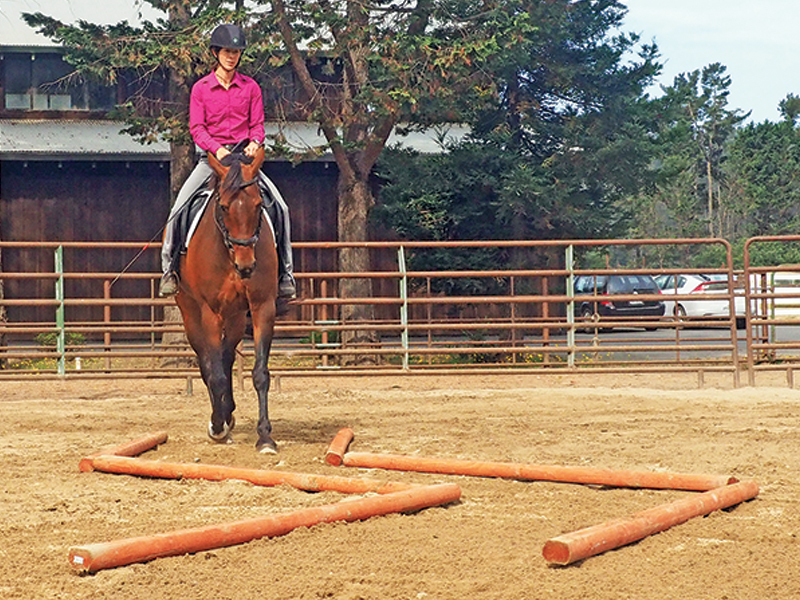
Zig Zag poles exercise. Photo courtesy of Jec Ballou
An exercise that helps both the mind and body operate at different speeds within a session is to choose a pattern that asks for a big dose of speed followed by some slow and technical footwork. This requires the horse to coordinate his muscular responses and helps calm and settle his mind on a task immediately following a bout of speed. I have included the zig zag poles exercise, but nearly any pattern that requires some specific foot placement can work well. Other useful setups include a labyrinth, a serpentine of cones, or a horseshoe-shaped pole configuration. For the zig zag, place the poles quite close together to form a narrow chute, as shown.
- Jog slowly through your zig zag.
- Proceed out to the perimeter of your arena and do one full lap at a very fast trot.
- As you finish the lap and approach the zig zag poles, begin to downshift until you are jogging very slowly by the time you pass through the poles.
- Repeat the above sequence several times.
- Now repeat the sequence in canter.
Releated: The Benefits of Cantering Your Horse
Main Photo: Clix Photography



